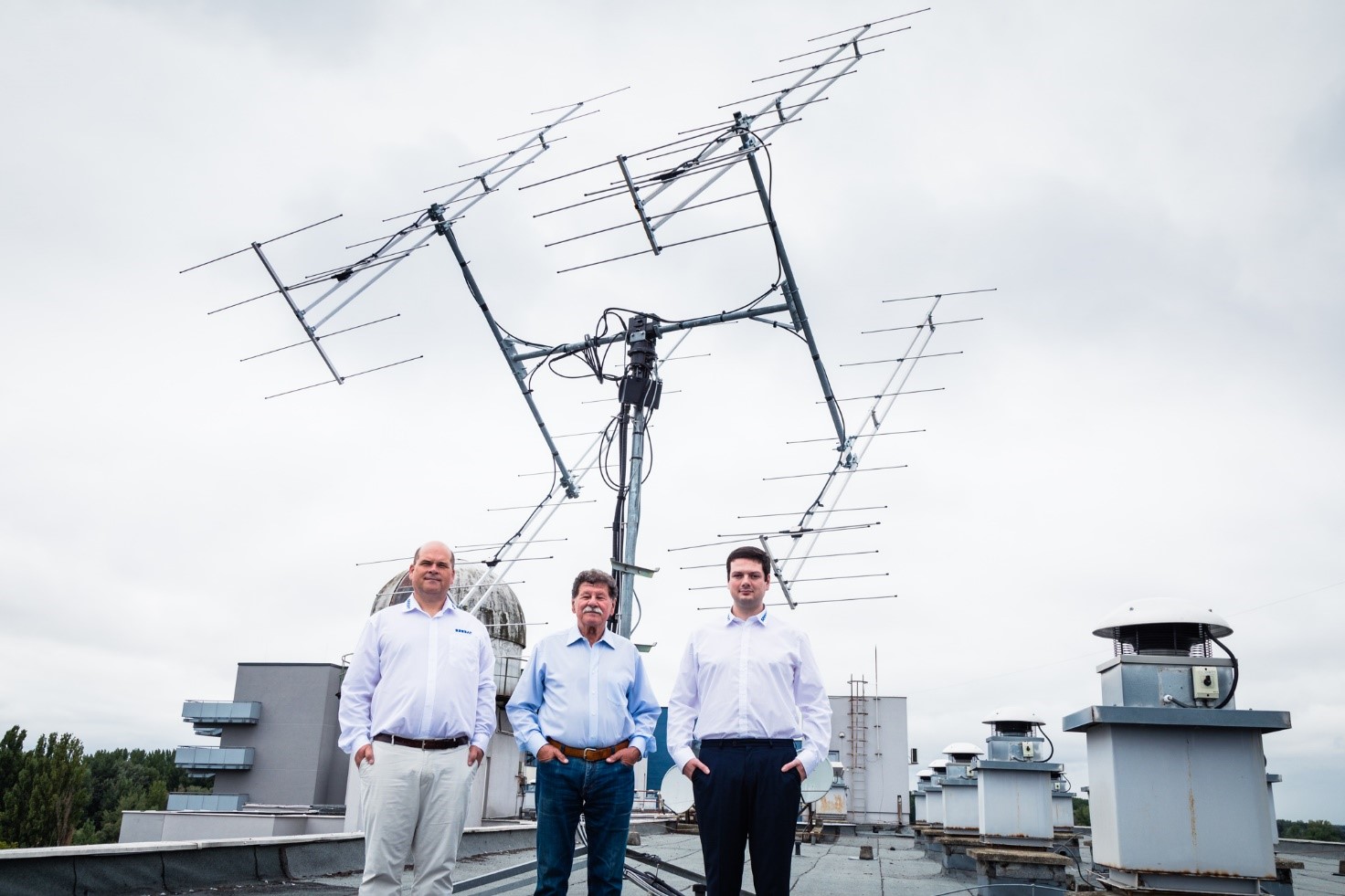“Earth to Moon…” – an experiment of historical scientific importance reproduced at Széchenyi
When Széchenyi István University’s József Honfy Amateur Radio Club was founded, it set itself the goal of contacting radio amateurs as far away as possible by means of radio waves. Most recently, the listeners have embarked on an experiment no less than reaching distant countries via the moon. This particular challenge was a true urban co-production, with Győr-based Carant Kft. contributing to the University's success by providing the appropriate antenna.
Walking around the József Honfy amateur radio station at Széchenyi István University, one is reminded of a riddle from childhood: is Africa or the Moon further away? The joke answer is Africa, because we cannot see the continent, but we can see the moon from Győr.
"The students and I have a long-standing desire to repeat the historically significant Zoltán Bay Earth-Moon-Earth radar experiment here on campus, on the roof of the University to be precise,"said Péter Ernő Németh, Associate Professor at the Department of Telecommunications. As head of the József Honfy Amateur Radio Club, he also shed light on the historical background of the experiment:
Zoltán Bay and his colleagues, rebuilding from ruins and empty laboratories after the Second World War, carried out a successful lunar radar experiment on 6 February 1946. Thus he was able to measure the distance of the Moon from the Earth with great accuracy. He was the first person in Europe to establish the science of radio astronomy.
Zoltán Bay is also responsible for the definition of the metre based on the speed of light.
At the suggestion of Zoltán Nagy, a Master’s engineering student and member of the Amateur Radio Association, and its deputy director, Lajos Kéri, the amateur radio community of Széchenyi István University wanted to honour Zoltán Bay's scientific achievements by repeating the experiment in a modern way, using tools and equipment available today. However, it soon became clear that the 120 MHz frequency once used by Zoltán Bay is now reserved for aviation. The team therefore opted for the 144 MHz band used by radio amateurs. To ensure the success of the project, Carant Ltd. of Győr, Hungary, joined the team as a sponsor and provided the antennas for the planned experiment.

Péter Németh, József Bognár and Zoltán Nagy on the roof of one of the Halls of Residence at Széchenyi István University (Photo: József Csaba Májer)
"Once the students had planned the experiment, including exactly what kind of antennas they would need, we could start manufacturing the antennas in our factory," said József Bognár, owner of Carant Ltd. who himself was excited to follow the work of the young people.
"We have produced a lot of antennas for countries all over the world, but we have never received such a request. We have had an excellent relationship with the Department of Telecommunications at Széchenyi István University for decades, and several antennas designed during diploma theses have become a physical reality in our factory," he added.
 The developers with the antenna array to receive signals from the Moon (Photo: Csaba József Májer)
The developers with the antenna array to receive signals from the Moon (Photo: Csaba József Májer)
"The initial lack of results did not discourage the team. First we doubled and then quadrupled the number of antennas, so we succeeded in capturing our own signals from the Moon," said Péter Németh. Zoltán Nagy added that the experiment also established links with other radio amateurs using the signals reflected from the Moon. "The stations of the radio amateurs were only a few thousand kilometres away, but the radio waves we launched travelled back and forth at the speed of light for 2.6 seconds, twice the distance of almost 400,000 kilometres between the Earth and the Moon," he said, explaining the value of their achievement.
"Since the successful experiment, we have been working to improve our radio station, with new antennas in new frequency bands to reach distant radio amateurs via the Moon. We welcome everyone to our station, students, current and former students who would like to try our lunar radar,"- said Péter Németh. "The answer to the original question is of course that the Moon is further away, not Africa. Our measurements at Széchenyi István University have confirmed this!"











